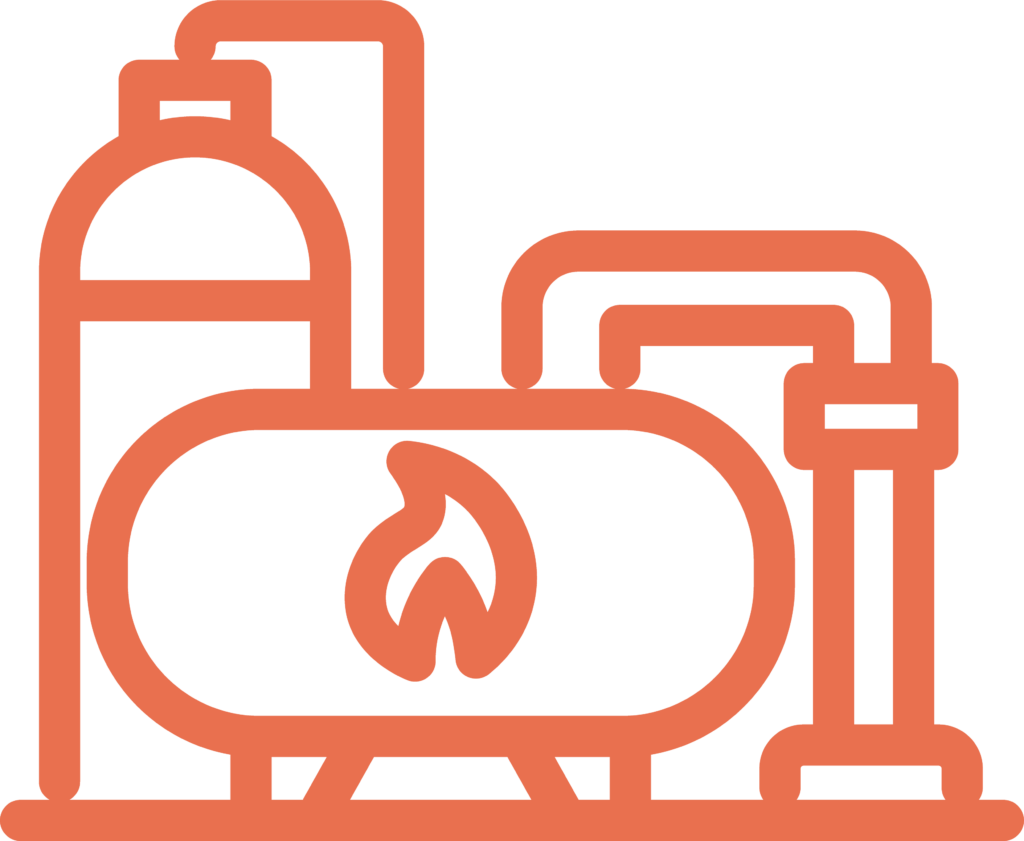Hydrogen has long been an important raw material in parts of the process industry, above all in the chemical industry and refineries. More than 99.6 percent of the hydrogen used today in Sweden, about 6 TWh, is used in industry.
Hydrogen use in Europe is currently completely dominated by the chemical and petrochemical industry, including refineries. Even in a global perspective it is refineries and the chemical industry, and above all ammonia production, that are responsible for the demand for hydrogen (Swedish Energy Agency, 2021). But thanks to increased demands to get rid of fossil fuels, hydrogen can become central in several new value chains to replace fossil energy.
Globally, around 120 million tonnes of hydrogen are produced per year. Of this hydrogen, approx. 70 million tonnes come from hydrogen production facilities and 50 million tonnes of hydrogen are by-products from the chemical industry. Today, less than five percent of hydrogen is produced through electrolysis. Replacing all the hydrogen used with fossil-free hydrogen from electrolysis would require approximately 4,000 TWh of fossil-free electricity production and result in an emission reduction of approximately 800 Mt of carbon dioxide per year, which corresponds to 2 percent of global emissions. (Fossil-free Sweden).
Why renewable hydrogen in the industry?
Hydrogen can replace fossil fuels in a variety of industrial processes, materials and products and thus reduce carbon dioxide emissions. It is not until recent years that the production and use of hydrogen in industry has began to gain momentum. We have here listed the main reasons for the rise of hydrogen.
- In the past, fossil fuels have been cheap and the infrastructure has been built for them. As support and commitment to drive climate change, for example from the EU has been strengthened, conditions and support are created to replace fossil energy with renewables.
- An example of support for reducing industry’s greenhouse gas emissions is the EU’s system for trading emission rights, the EU ETS, which sets a price on greenhouse gas emissions. The cost of buying emission rights if you e.g. uses fossil fuels or raw materials makes it more attractive to phase them out in favor of renewable alternatives.
- In Sweden, investments such as “Industriklivet” are made to support the industry’s goal of having no net emissions of greenhouse gases into the atmosphere by 2045 at the latest.
- The demand for fossil-free products is increasing and industry in Sweden must increase its competitiveness by becoming fossil-free. As climate targets and legal requirements are tightened globally, many industries are reorganizing in good time to gain a head start.
- The price of renewable electricity has become lower throughout the world and is expected to decrease.
- Electrolysis technology is improving and as production rates increase costs for electrolysers are expected to be halved thanks to economies of scale.
There are several ongoing and planned investments to replace fossil energy with renewable hydrogen. Primarily in refineries, the chemical industry and the steel industry. Click below to read more about how the renewable hydrogen gas is applied in each industry.



















